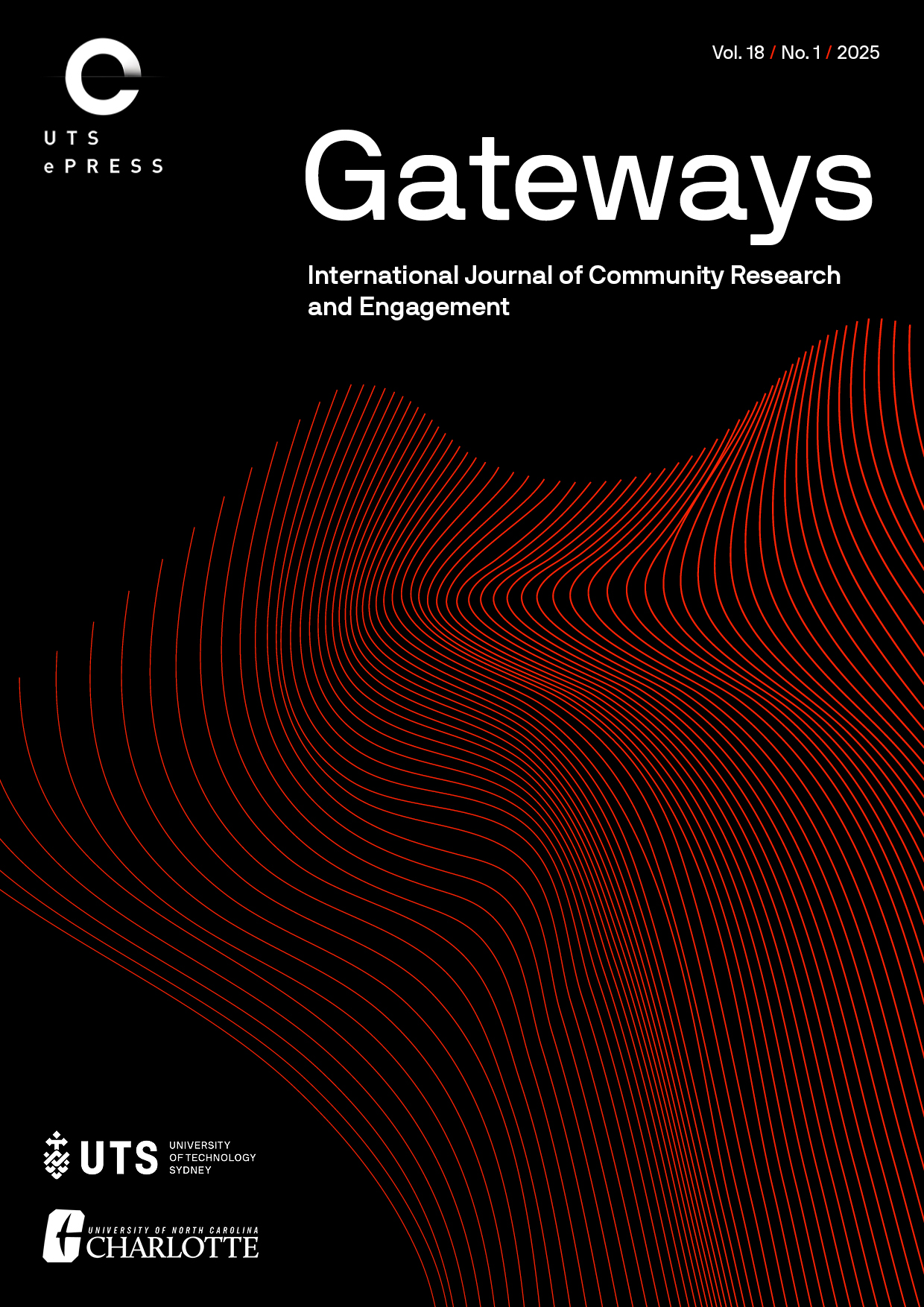Curating life in vacant spaces: Community action research and reversing the process of academic knowledge-making
Main Article Content
Abstract
For scholars in academic institutions, the process of research usually begins with a question often gleaned from academic literature, progresses through some methods and results, then ends in writing and dissemination of the findings. ‘Impact’ is identified by trying to see if anyone takes up the research and uses it to inform policy or action outside of academia – with contemporary impact databases measuring this by whether it has been cited in policy documents. But this way of understanding impact is fundamentally at odds with researching community-led activism, where impact is already happening, and researchers engage with communities to document and evaluate the impact in ways that support the work. For activists out in the community, research and learning are happening all the time and have impact without anyone writing it up at all. This article reflects on a research project in the city of Ōtautahi Christchurch in Aotearoa New Zealand, where researchers and community activists began with ‘impact’ and ‘dissemination’. From there, we developed frameworks and methods, developed evidence, then ended with asking wider theoretical questions relevant to academic literature. Effectively, we reversed the order that research projects usually follow. In order to recognise this ‘reversed’ order, our article utilises a reversed structure, using the concept of thinking infrastructures to understand what academic research adds to the knowledges already produced in community impact.
Article Details
Issue
Section
Authors who submit articles to this journal from 31st March 2014 for publication, agree to the following terms:
a) Authors retain copyright and grant the journal right of first publication with the work simultaneously licensed under a Creative Commons Attribution License that allows others to share and adapt the work with an acknowledgement of the work's authorship and initial publication in this journal.
b) Authors are able to enter into separate, additional contractual arrangements for the non-exclusive distribution of the journal's published version of the work (e.g., post it to an institutional repository or publish it in a book), with an acknowledgement of its initial publication in this journal.
c) Authors are permitted and encouraged to post their work online (e.g., in institutional repositories or on their website) prior to and during the submission process, as it can lead to productive exchanges, as well as earlier and greater citation of published work (See The Open Access Citation Advantage Service). Where authors include such a work in an institutional repository or on their website (ie. a copy of a work which has been published in a UTS ePRESS journal, or a pre-print or post-print version of that work), we request that they include a statement that acknowledges the UTS ePRESS publication including the name of the journal, the volume number and a web-link to the journal item.
d) Authors should be aware that the Creative Commons Attribution (CC-BY) License permits readers to share (copy and redistribute the work in any medium or format) and adapt (remix, transform, and build upon the work) for any purpose, even commercially, provided they also give appropriate credit to the work, provide a link to the license, and indicate if changes were made. They may do these things in any reasonable manner, but not in any way that suggests you or your publisher endorses their use.
For Volume 6 (2013) and before, the following copyright applied:
Articles published by UTSePress are protected by copyright which is retained by the authors who assert their moral rights. Authors control translation and reproduction rights to their works published by UTSePress. UTSePress publications are copyright and all rights are reserved worldwide. Downloads of specific portions of them are permitted for personal use only, not for commercial use or resale. Permissions to reprint or use any materials should be directed to UTSePress.
